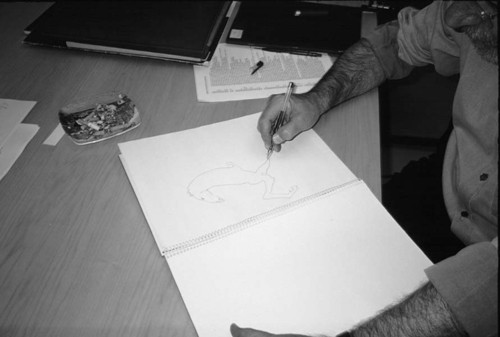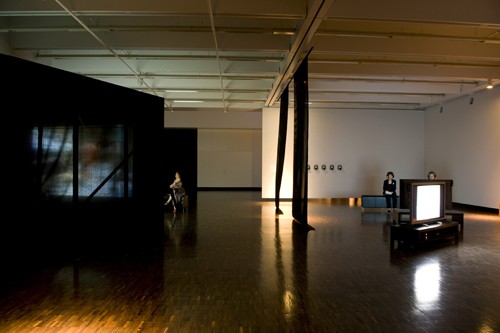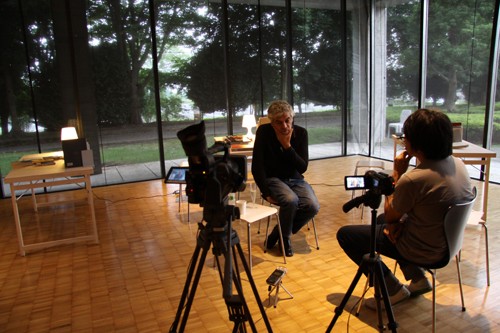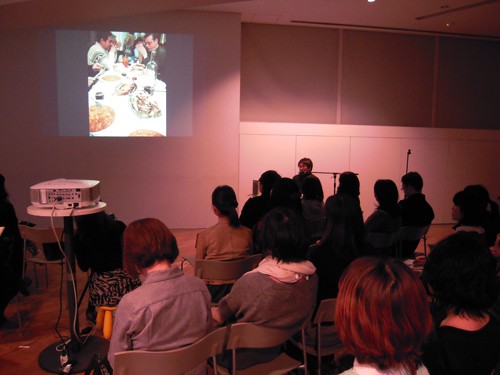In this second in a series of three talks on the exhibition “MU – Pedro Costa & Rui Chafes”, the art critic Atsushi Sugita spoke about the state of contemporary art in Portugal.
In addition to his activities as a researcher and critic of contemporary art, Professor Sugita teaches at the Joshibi University of Art and Design and operates the alternate art space Art & River Bank. His knowledge of Portuguese culture, cinema and art has been deepened by his many visits to the country. His publications include “à cidade branca” (Towards a white city, Sairyusha, 2002). He organized the group exhibition “The Age of Micro Voyages” (Joshibi Art Museum, 2010), which included the work of Pedro Costa and other Portuguese artists. The following is an edited excerpt from his slide and video lecture.
The reason behind my first visit to Portugal was the movie “Dans la ville blanche” (1986), directed by the Swiss Alan Turnell who filmed it in Lisbon. Though my visits were at first unrelated with my work, in time I became acquainted with many contemporary artists and art-related people.
There are many large art museums in Portugal. Among these is the Serralves Museum of Contemporary Art in Porto, the country’s second largest city. This museum was designed by Álvaro Siza and was the venue for “FORA!OUT!”, the exhibition that was the model for “MU”. Though it is a cube-shaped, Modernist structure, its interior is full of curving lines and well-it spaces. The Portuguese sense of space is highly sophisticated. It is something one senses in the work of Chafes also. I was impressed with sketches by Álvaro Siza that I saw there, and so I wrote to the museum and was able to realize an exhibition of his drawings at the Yokohama Portside Gallery (no longer in existence) in 2002.

Siza drawing
I believe the first exhibition of contemporary Portuguese art was the exhibition “Contemporary Art from Portugal: Western Lines” held at the Hara Museum ARC in 1993. After that, Portuguese artists such as José de Guimarães and Joana Vasconcelos exhibited works at the Echigo-Tsumari Art Triennial as representatives of their country.
For historical reasons, there is still a strong image of Portugal as having a ″southern barbarian culture.″ But the fact is the country has a thriving contemporary art scene. In fact, artists there function better than their counterparts in Japan thanks to the living expenses and studio space provided to them by galleries. And there are large commercial galleries, such as Cristina Guerra and Galeria Graça Brandão.
What is obvious in Portuguese art, like the installation by Artur Barrio at Docmenta XI (2002), is an awareness of the colonies (i.e., colonial rule) as an issue, which is a common theme among artists in Portugal. It is a self-reflection that the Portuguese have towards negative elements from their so-called Age of Discovery, during which the country established colonies and benefited from them, all the while ignoring problems that arose from them. That perspective can be seen in Pedro Costa’s movies also. I believe Costa’s shyness and stubbornness and the fact that he is depicting the troubles of migrants from the colonies can be said to be very Portuguese.
The exhibition “The Age of Micro Voyages” (2010, Joshibi Art Museum), which I organized, was an attempt to provide a new perspective on contemporary Portugal through the video work of four Portuguese artists: João Tabarra, Maria Lusitano, Miguel Palma and Pedro Costa.

“The Age of Micro Voyages” (exhibition view)

Interview with Pedro Costa at Joshibi University of Art and Design (part of the Oral Critic Archive interview project) (The above three photos courtesy of Atsushi Sugita.)
The MU exhibition at the Hara Museum focuses on two Portuguese artists in a highly original way that makes it a special.

On December 16, 2012, 14:30 – 16:00 at The Hall at the Hara Museum of Contemporary Art
